In December, we did the Overseas Adventure Travel itinerary Cruising the Adriatic: Croatia & Montenegro. We started in Zagreb, took a bus to Zadar where we embarked on our ship Athena, visited Split, Hvar, Dubrovnik, and Kotor on our trip south, then Korcula and Sibenik on the return north, disembarked in Zodar and returned by bus to Zagreb. We toured the old capital Varazdin on the last day and then flew home from Zagreb.
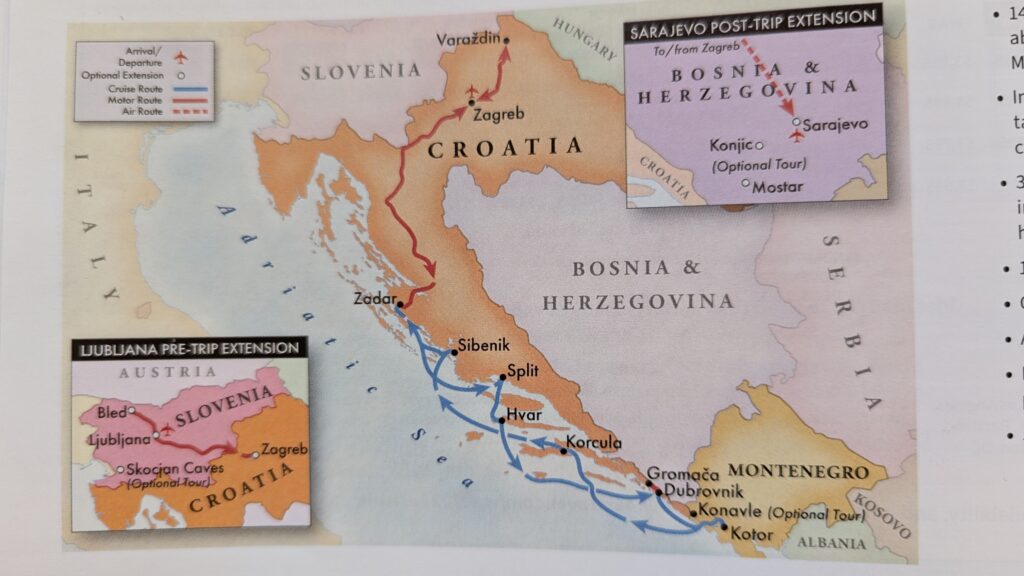
We stayed in Zagreb at a hotel with several guests in UNLV sweatshirts, who turned out to be business graduate students doing research on developing economies (Zagreb, Croatia) and mature economies (Zurich, Switzerland). Croatia and Slovenia appear well ahead of other nearby countries such as Serbia and Montenegro. Cities (such as Dubrovnik) along the Adriatic Sea are among the most popular tourist attractions in the world.
We arrived in Zagreb late on Saturday and walked around the neighborhood to find large crowds on every sidewalk.
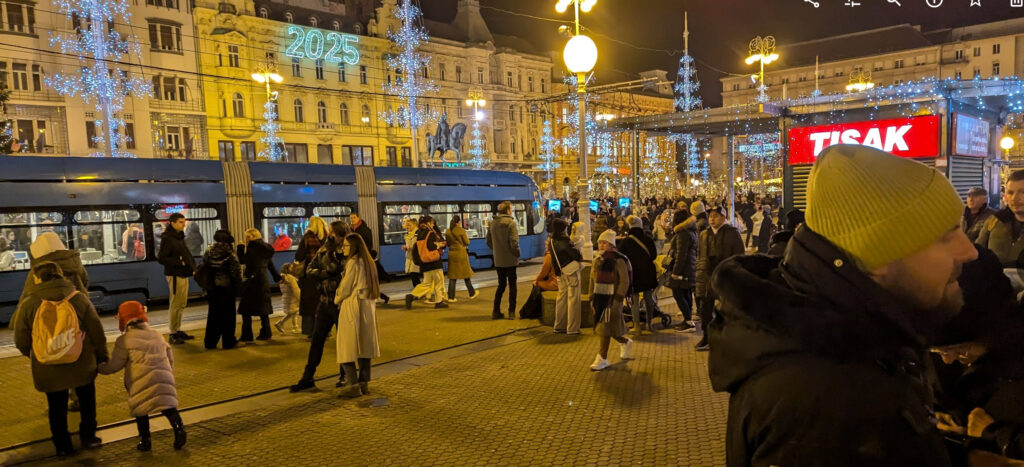
The next day we walked around the older parts of the city.
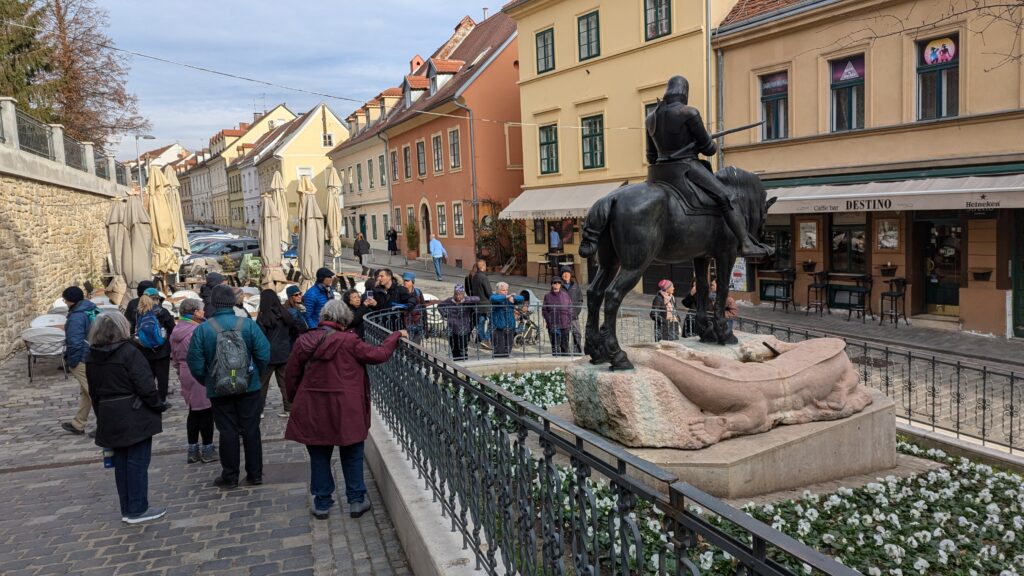
On our bus ride to Zadar, we were surprised by a heavy snowfall.
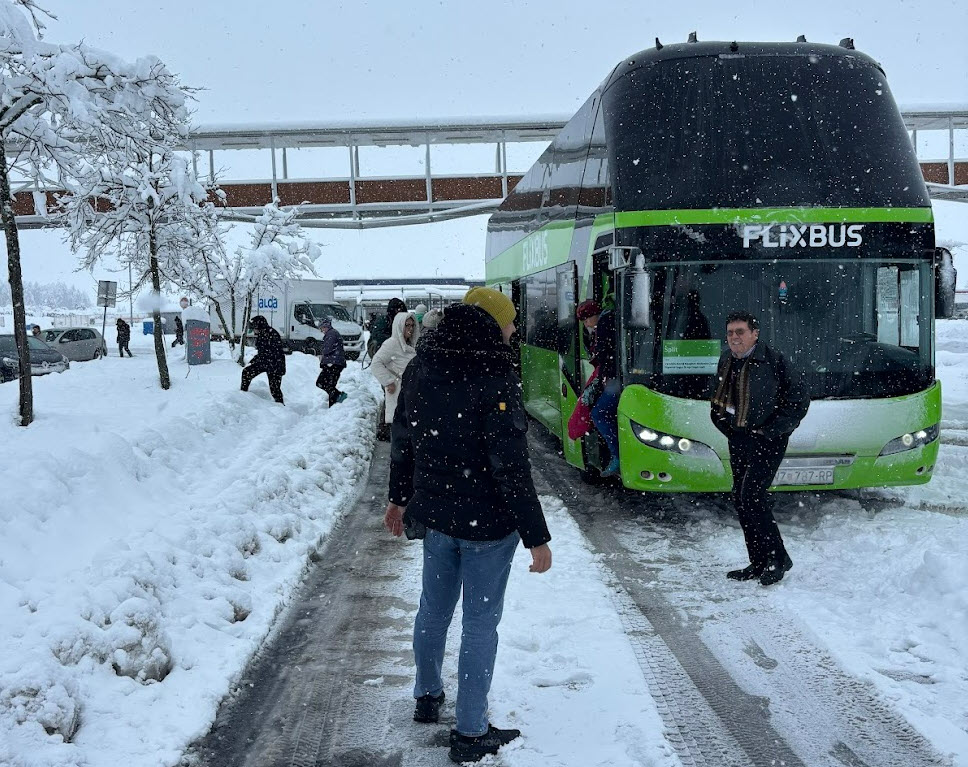
Winter turned into spring as we exited a long tunnel. Zadar is famous for its sea organ. Pipes with flutes make music as the waves change the pressure in underground pipes. Nearby is this constantly changing visual display.
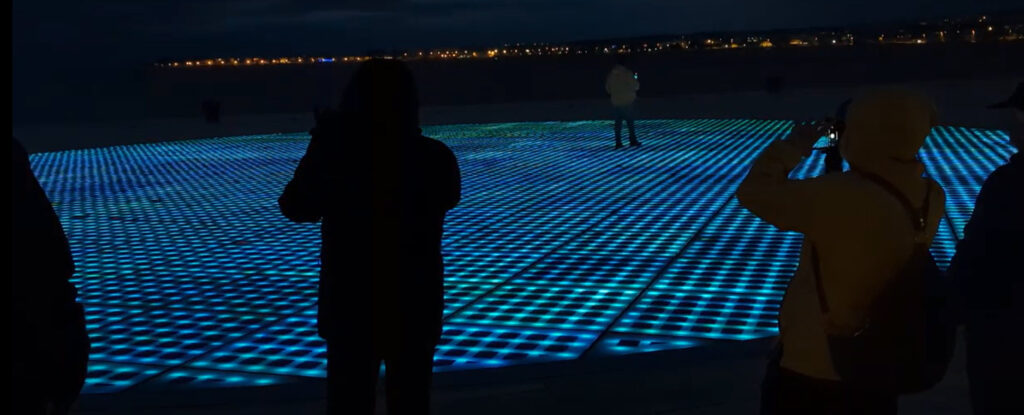
Diocletian’s Palace in Split is the greatest Roman ruin in southeastern Europe. It had a roof back in the day.

Hvar is a must-see island. This canal connects two different bays on the Adriatic Sea. This was one of the most beautiful sights on the trip.
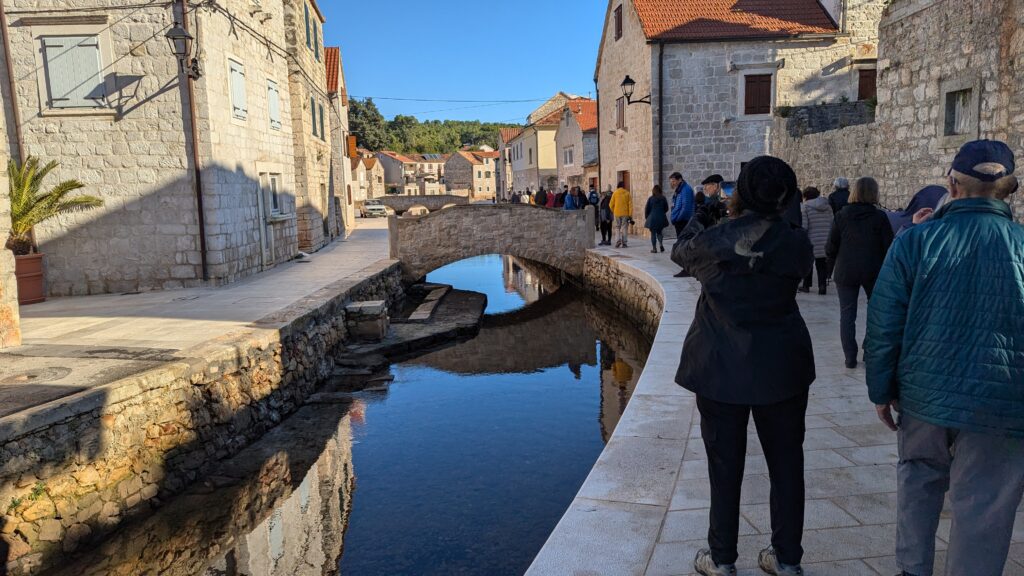
We enjoyed a glass of wine at a nearby wine cellar.
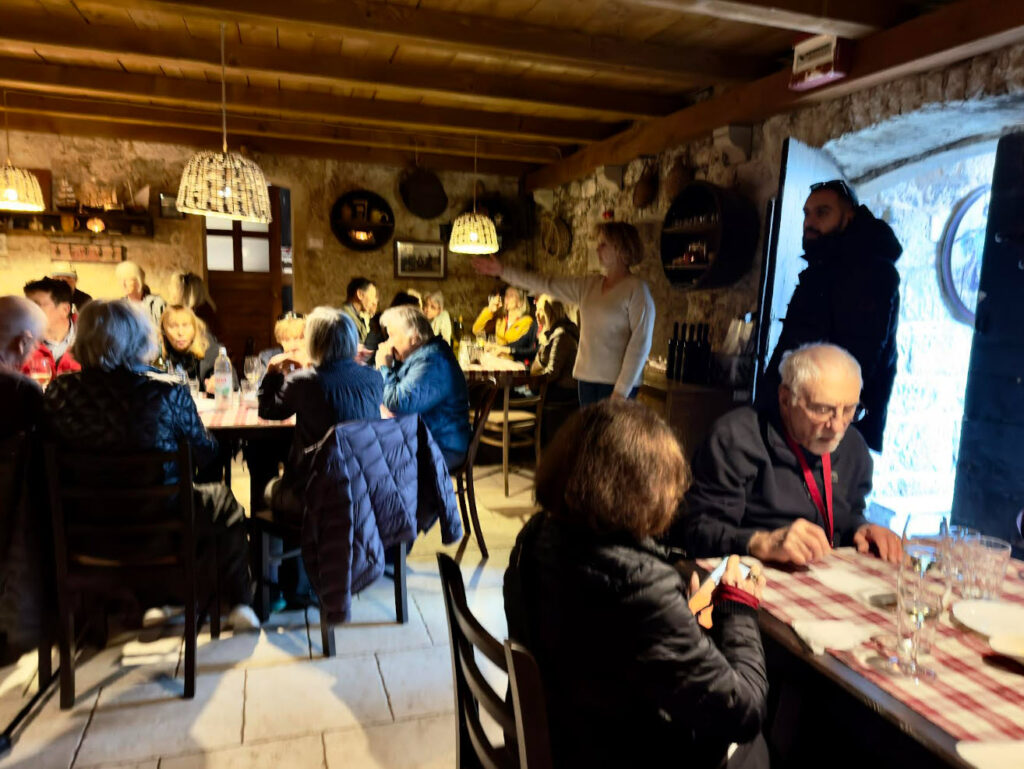
Dubrovnik probably attracts more tourists than the rest of the Adriatic combined. The path along the city wall is so crowded that only counterclockwise traffic is allowed. During the regional war in the 1990s, the city was under siege for many months.
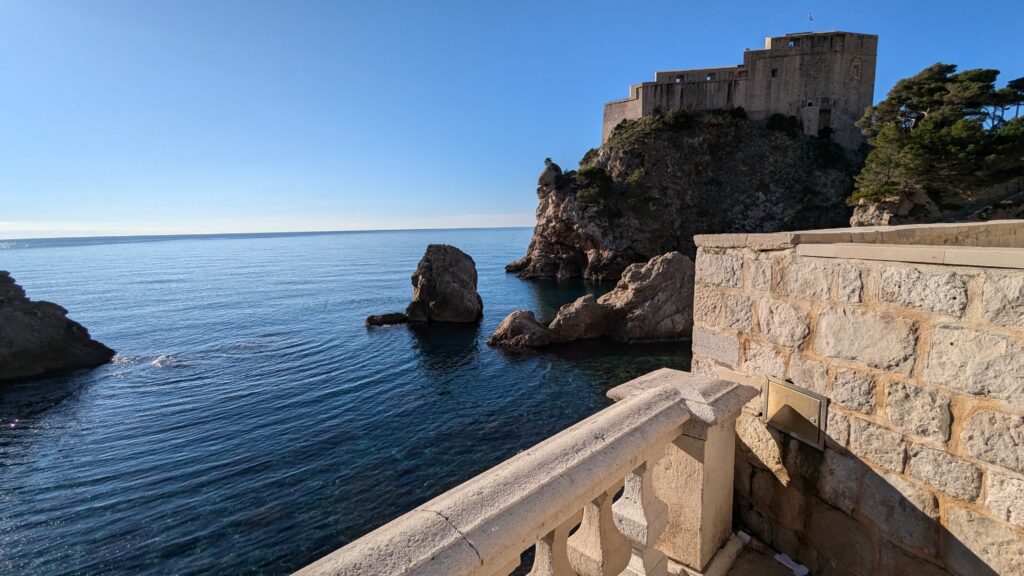
Our tour on the Adriatic included a brief visit to Kotor, Montenegro. This island was built by throwing rocks into the sea. We did our part.
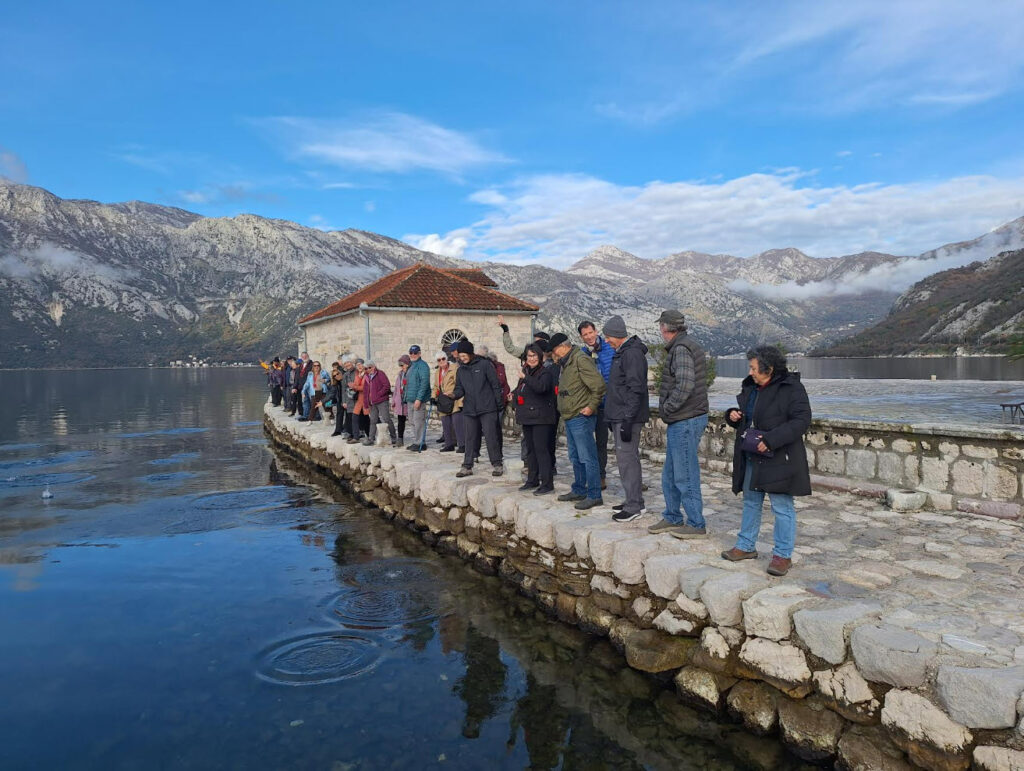
Korcula provides more examples of how ancient fortification can morph into tourist attractions. Here is a defense tower that turned into a glassed-in bar.
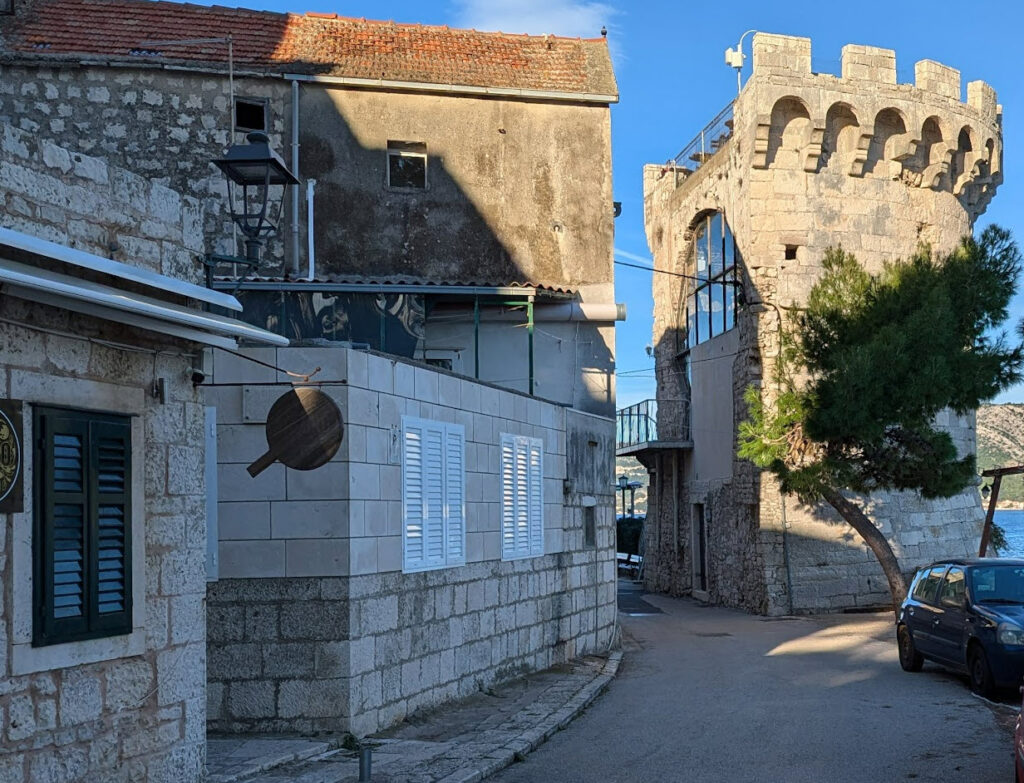
Reconstruction illustrates how important the tourist industry is in Croatia.
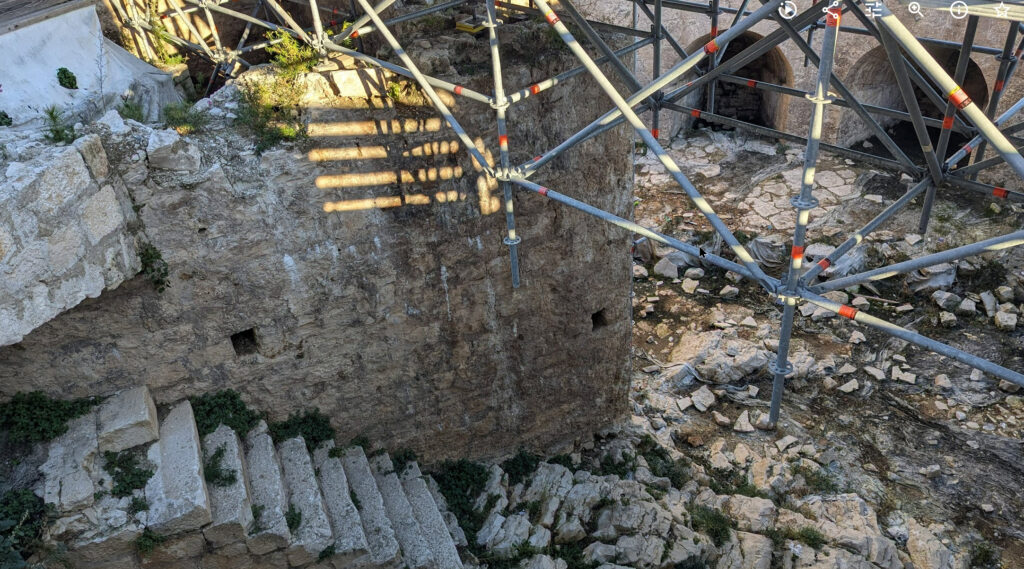
History records the lives of kings and generals, but the lives of most people are quickly forgotten. In Sibenik, ordinary people are memorialized as faces on a cathedral.
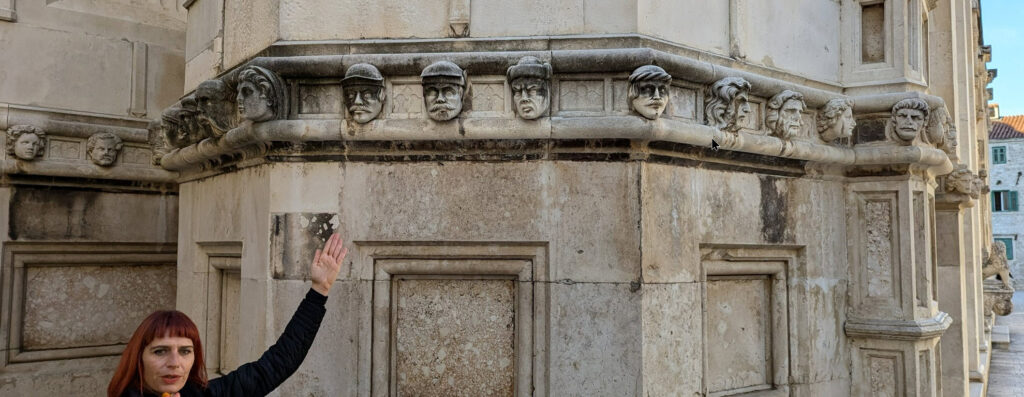
From Sibenik, we rode a bus to Krka Falls National Park. Trails allow amazing views.
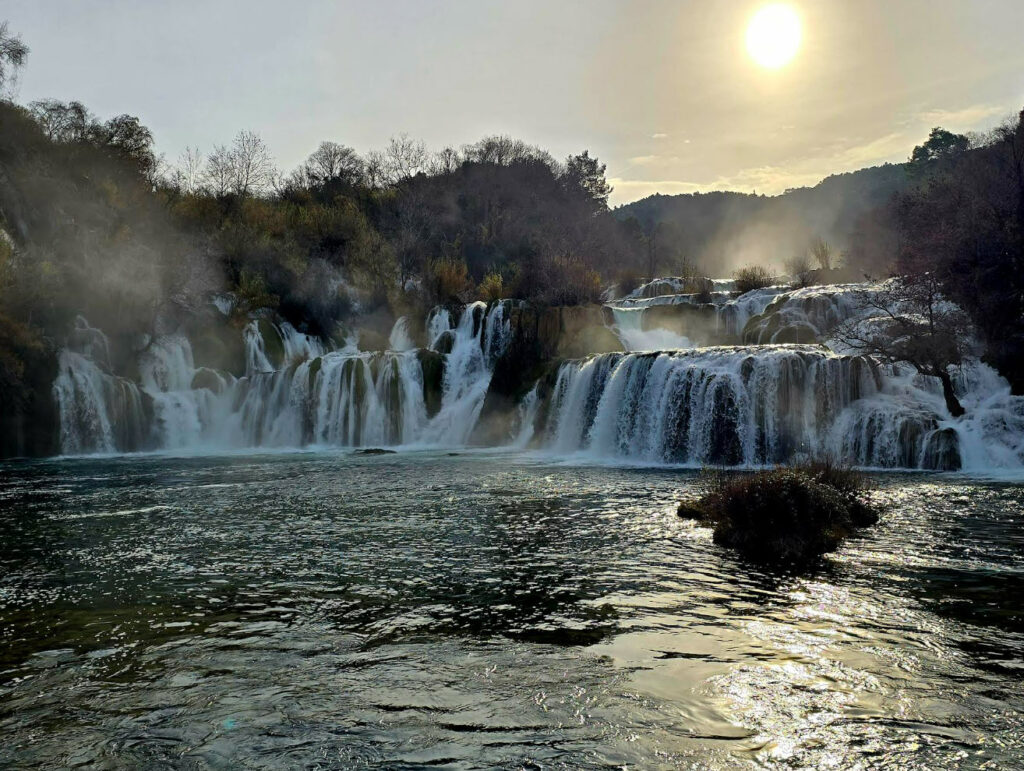
On one of our side trips, we learned what life was like a hundred years ago. Our host Ann provided a very entertaining travel through time.
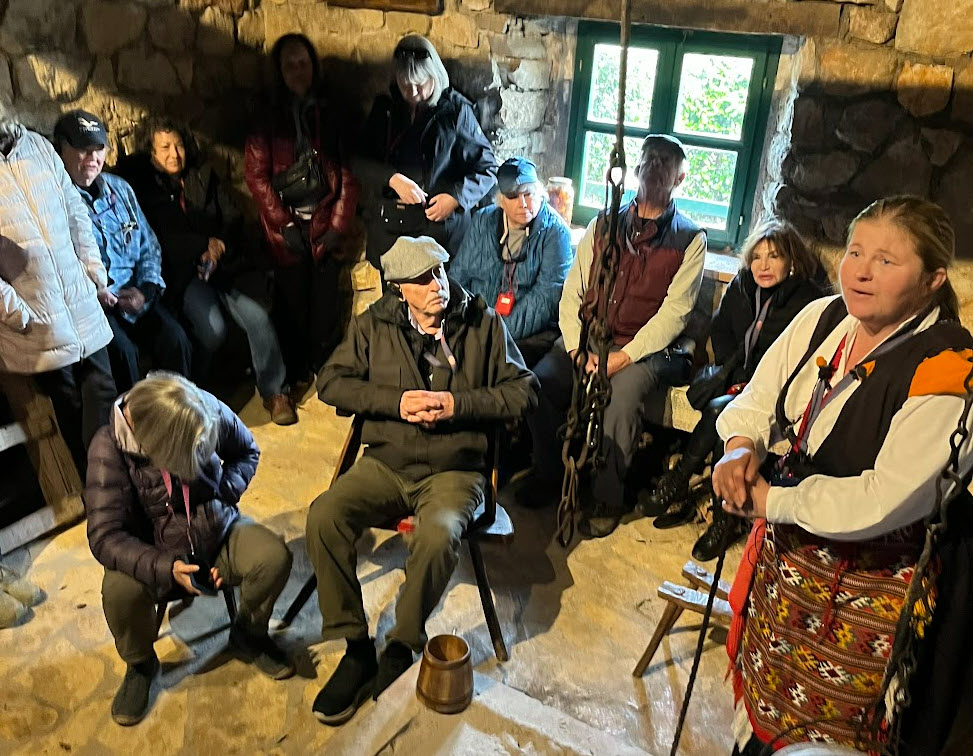
Onboard entertainment added an essential element to the joy of travel.


Except for an occasional home-hosted meal,
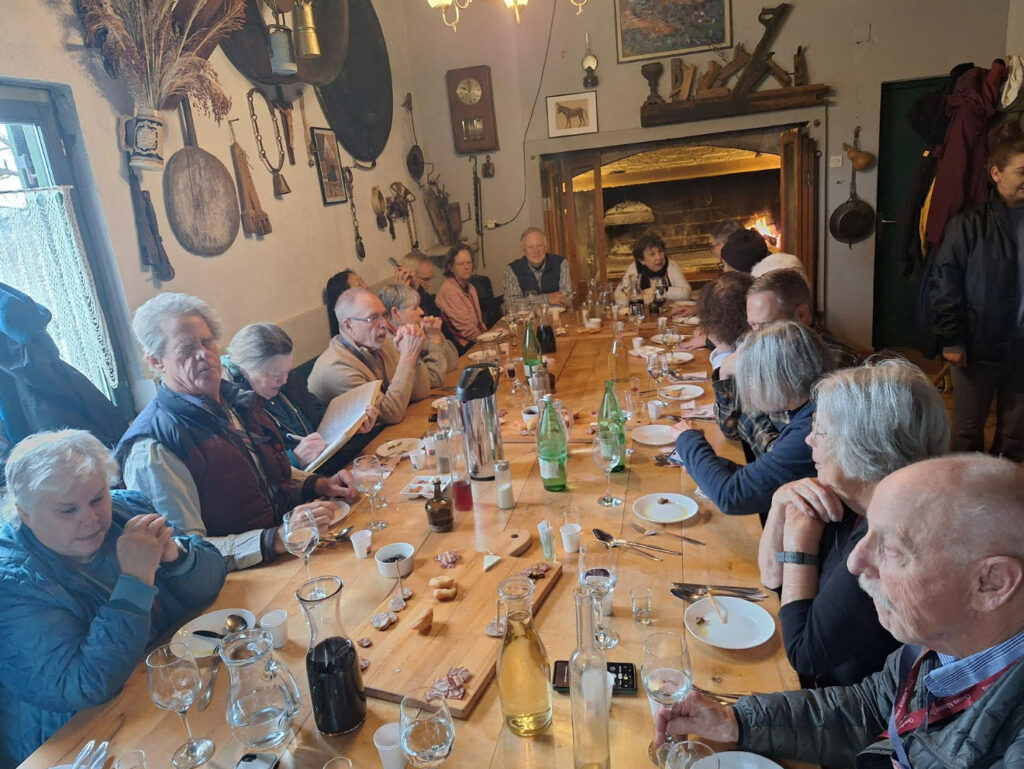
we ate breakfast, lunch, and dinner on our ship. Every evening we ate on newly decorated plates, using food-safe colors.
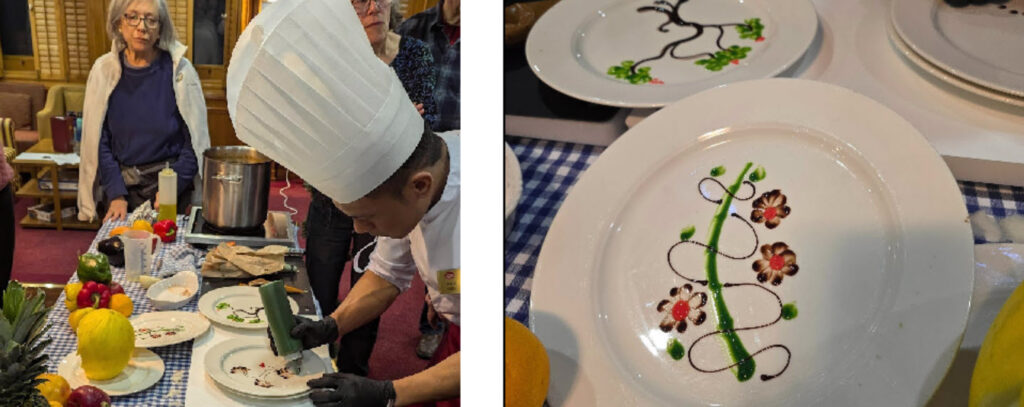
On the final evening of the cruise, we accepted an invitation to eat at the captain’s table.
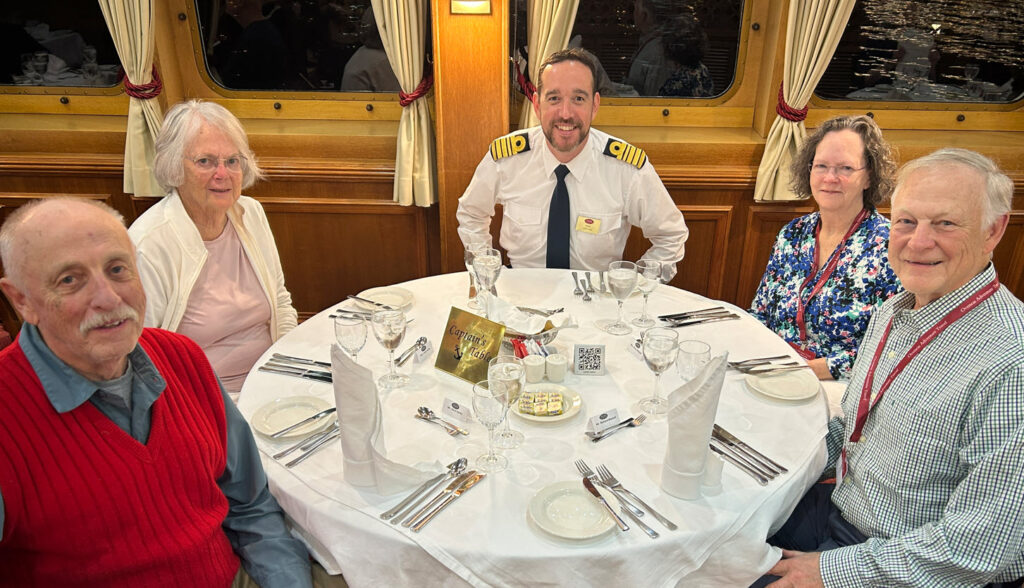
We disembarked our ship the next morning and returned by bus to Zagreb. The next day we toured Varazdin, the old capital of Croatia. The main tourist attraction is the castle, restored and filled with period furniture and artifacts.
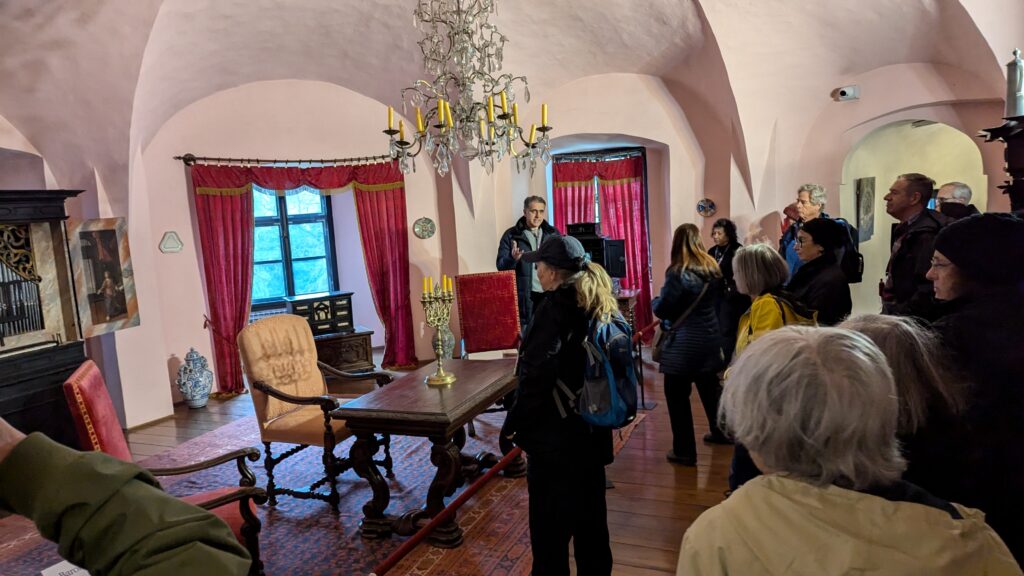
Another highlight was lunch at a country estate. As is the custom, we first entered the basement for a glass of wine, then upstairs for food.
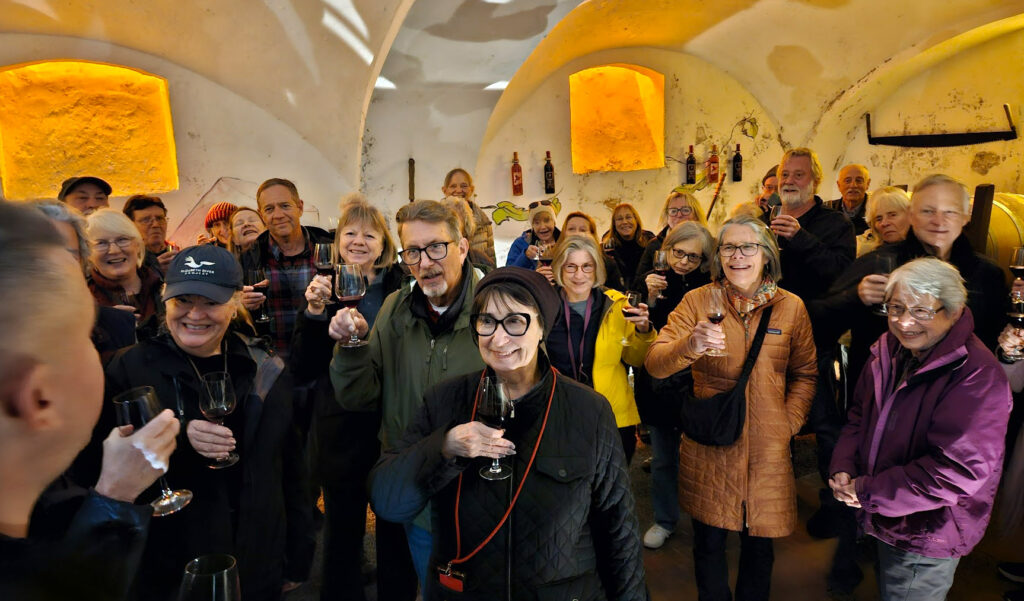
We will continue to travel as long as we find it joyful and inspirational. A smiling face owns no language or tradition.
